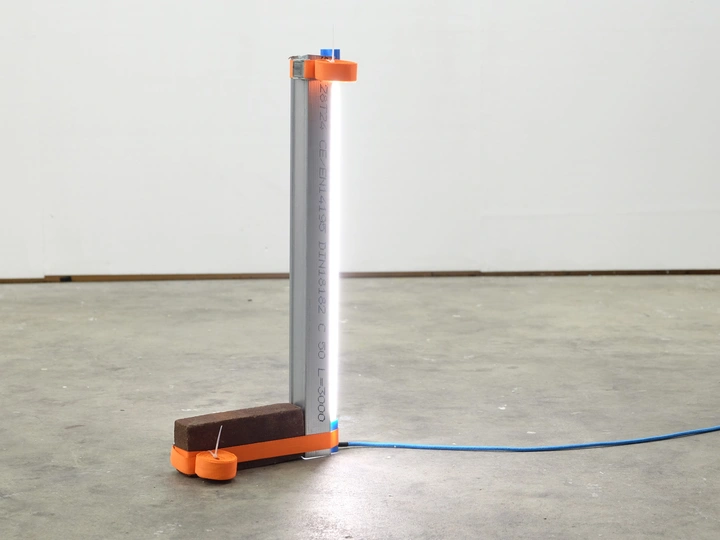MADE WITH LESS

His research focuses on the notion of extraction, specifically on re-aligning contemporary material practices with planetary boundaries. He designs low-tech tools which reframe production as a metabolic process and foster better material autonomy in the age of blackboxed automation. Through prototypes, manuals and exhibitions he seeks to re-center design as a system of access open for appropriation, adaptation and reuse. Experienced in cross-media fabrication and spatial / exhibition design, he also dabbles in editorial design and writing.
Since graduating from Ergonomic Design at the Academy of Fine Arts and Design in Wroclaw (2018) and Design Academy Eindhoven (2022) he has worked in multiple collaborations, both in the Netherlands and internationally; among his recent partners are BASE Milano, Medialab Matadero (Madrid), Erfgoed ‘s-Hertogenbosch, Katrin Hornek, and Studio Nienke Hoogvliet. Since 2024, he has been involved with Trixie The Hague as part of the Maintenance & Buildup team.
In the design community, the idea of a decentralised urban production has long been upheld as a possible counter to its alienating and extractive global counterpart. Despite its promise, the widespread success of the former is inhibited by ‘inefficiency’, or, in other words, its inability to provide the expected quality and quantity of outputs at the expected convenience.
Rather than seeing them as problems to be eradicated, MADE WITH LESS frames ‘in/efficiency’ and ‘in/convenience’ as starting points for research; what if distributed production could become more accessible not by removing its frictions, but rather alleviating them just enough so that they can be normalised?
MADE WITH LESS emerges from the necessity to ground urban production within the socio-economical realness of today. At its core, it is a method of making the incompatible fit together: a system of universal connectors allowing anyone to recombine globally produced, but locally available 'feral components' (hardware, scavenged items, waste) into functional objects, using non-permanent lashing and binding methods. This is facilitated by manuals, which are distributed together with MWL connectors as ‘unfinished’ kits.
MWL could offer a better formalised (yet non-prescriptive) method for tapping into urban overabundance, helping its users navigate the trade-offs between time and resources invested in designs they choose to make. As a result, cradle-to-grave objects would enter the circular economy, leading up to a new generation of things which are, indeed, made with less.
In its current state, MWL allows building some domestic objects (light fixtures, simple furnishings), but it aspires to grow towards larger structures, like exhibition systems and temporary architecture. The project's wider ambition is to create a library of sample designs, connectors, and typologies of feral components, which would serve as a platform for engagement and collaboration.